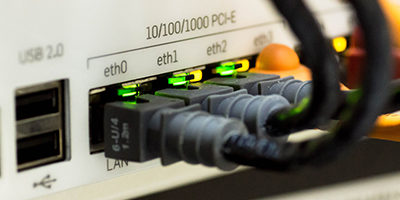%
Jubak’s Picks Performance 1997-2019
Jubak’s Picks
Buy and hold? Not really.
Short-term trading?
Not by a long shot.
So what is the stock-picking style of The Jubak’s Picks portfolio?
Click to expand...
Click to View the Jubak’s Picks Portfolio
I try to go with the market’s momentum when the trend is strong and the risk isn’t too high, and I go against the herd when the bulls have turned piggy and the bears have lost all perspective. What are the results of this moderately active — the holding period is 12 to 18 months — all-stock portfolio since inception in May 1997? A total return of 584% as of December 31, 2019. That compares to a total return on the S&P 500 stock index of 335% during the same period.
%
Top 50 Stocks Performance 2019
Top 50 Stocks
This long-term, buy-and-holdish portfolio was originally based on my 2008 book The Jubak Picks.
Trends that are strong enough, global enough, and long-lasting enough to surpass stock market averages.
Click to expand...
Click to view the Top 50 Stocks Portfolio
In The Jubak’s Picks Portfolio I identified ten trends that were strong enough, global enough, and long-lasting enough to give anyone who invested in them a good chance of beating the stock market averages.
To mark the publication of my new book on volatility, Juggling with Knives, and to bring the existing long-term picks portfolio into line with what I learned in writing that book and my best new ideas on how to invest for the long-term in a period of high volatility, I’m completely overhauling the existing Top 50 Picks portfolio.
You can buy Juggling with Knives at bit.ly/jugglingwithknives
%
Dividend Income Performance 2021
Dividend Income
Every income investor needs a healthy dose of dividend stocks.
Why bother?
Why not just concentrate on bonds or CDs?
Click to expand...
Click to view the Dividend Income Portfolio
Because all the different income-producing assets available to income investors have characteristics that make them suited to one market and not another. You need all of these types of assets if you’re going to generate maximum income with minimum risk as the market twists and turns.
For example: bonds are great when interest rates are falling. Buy early in that kind of market and you can just sit back and collect that initial high yield as well as the capital gains that are generated as the bonds appreciate in price with each drop in interest rates.
CDs, on the other hand, are a great way to lock in a yield with almost absolute safety when you’d like to avoid the risk of having to reinvest in an uncertain market or when interest rates are crashing.
Dividend stocks have one very special characteristic that sets them apart from bonds and CDs: companies raise dividends over time. Some companies raise them significantly from one quarter or year to the next. That makes a dividend-paying stock one of the best sources of income when interest rates start to rise.
Bonds will get killed in that environment because bond prices will fall so that yields on existing bonds keep pace with rising interest rates.
But because interest rates usually go up during periods when the economy is cooking, there’s a very good chance that the company you own will be seeing rising profits. And that it will raise its dividend payout to share some of that with shareholders.
With a dividend stock you’ve got a chance that the yield you’re collecting will keep up with rising market interest rates.
But wouldn’t ya know it?
Just when dividend investing is getting to be more important—becoming in my opinion the key stock market strategy for the current market environment—it’s also getting to be more difficult to execute with shifting tax rates and special dividends distorting the reported yield on many stocks.
I think there’s really only one real choice—investors have to pull up their socks and work even harder at their dividend investing strategy. That’s why I revamped the format of the Dividend Income portfolio that I’ve been running since October 2009. The changes aren’t to the basic strategy. That’s worked well, I think, and I’ll give you some numbers later on so you can judge for yourself. No, the changes are designed to do two things: First, to let you and me track the performance of the portfolio more comprehensively and more easily compare it to the performance turned in by other strategies, and second, to generate a bigger and more frequent roster of dividend picks so that readers, especially readers who suddenly have a need to put more money to work in a dividend strategy, have more dividend choices to work with.
Why is dividend investing so important in this environment? I’ve laid out the reasons elsewhere but let me recapitulate here. Volatility will create repeated opportunities to capture yields of 5%–the “new normal” and “paranormal” target rate of return–or more as stock prices fall in the latest panic. By using that 5% dividend yield as a target for buys (and sells) dividend investors will avoid the worst of buying high (yields won’t justify the buy) and selling low (yields will argue that this is a time to buy.) And unlike bond payouts, which are fixed by coupon, stock dividends can rise with time, giving investors some protection against inflation.
The challenge in dividend investing during this period is using dividend yield as a guide to buying and selling without becoming totally and exclusively focused on yield. What continues to matter most is total return. A 5% yield can get wiped out very easily by a relatively small drop in share price.
Going forward, I will continue to report on the cash thrown off by the portfolio—since I recognize that many investors are looking for ways to increase their current cash incomes. But I’m also going to report the total return on the portfolio—so you can compare this performance to other alternatives—and I’m going to assume that an investor will reinvest the cash from these dividend stocks back into other dividend stocks. That will give the portfolio—and investors who follow it—the advantage of compounding over time, one of the biggest strengths in any dividend income strategy.
What are some of the numbers on this portfolio? $29,477 in dividends received from October 2009 through December 31, 2013. On the original $100,000 investment in October 2009 that comes to a 29.5% payout on that initial investment over a period of 39 months. That’s a compound annual growth rate of 8.27%.
And since we care about total return, how about capital gains or losses from the portfolio? The total equity price value of the portfolio came to $119,958 on December 31, 2012. That’s a gain of $19,958 over 39 months on that initial $100,000 investment or a compound annual growth rate of 5.76%.
The total return on the portfolio for that period comes to $49,435 or a compound annual growth rate of 13.2%.
How does that compare to the total return on the Standard & Poor’s 500 Stock Index for that 39-month period? In that period $100,000 invested in the S&P 500 would have grown to $141,468 with price appreciation and dividends included.) That’s a total compounded annual rate of return of 11.26%.
That’s an annual 2 percentage point advantage to my Dividend Income portfolio. That’s significant, I’d argue, in the context of a low risk strategy.
Portfolio Related Posts
Visa beats but falls on guidance–that’s what “priced for perfection” means
After the close Thursday, Visa (V) reported earnings of $2.41 a share (after adjusting for one-time items) for the December 2023 quarter. (That’s the company’s fiscal first quarter.) Analysts had been looking for $2.34 a share in adjusted earnings. Revenue grew 8.8% to $8.63 billion, again beating analyst forecasts for $8.55 billion in revenue. Visa said payments volume grew 8%, and that its processed transactions rose 9% in the period. And yet the stock was down $4.70 a share, or 1.72%, to $267.91 at the close today, Friday, January 26. Why?
Big news for the week ahead isn’t the Fed meeting but Apple earnings report
Yes, it’s a Federal Reserve meeting week, but I expect Apple’s (AAPL) earnings report for its December quarter to be the big event of the week. With the potential to move the tech sector and the market.
BYD climbs over Tesla to become No. 1 in electric car deliveries in the fourth quarter
This change at the top was widely expected. With both Tesla and BYD, the switch at No. 1 is now complete.
Adding Chinese electric vehicle maker BYD to portfolios tomorrow
Pick #8: BYD (BYDDF). I know; I know. What’s a Chinese stock doing on this list? It’s here because BYD, not Tesla (TSLA) is the big growth story in electric vehicles and not just for this month–but for years. And because I can see catalysts that are about to power this stock higher. Morningstar calculates that BYD is 20% undervalued right now. Because this is a China stock we’ll need to take a deep look at valuation later in this post. But first, the growth story.
Apple hit with patent judgment that puts quarterly sales growth in question
The hope among investors and on Wall Street was that Apple (AAPL) would show revenue growth when it reported its fiscal first quarter earnings in January. That growth would be the first in a year after four straight quarters of falling sales. That’s the longest streak of declining quarterly sales in two decades. But now a patent decision against Apple will take some of its best-selling Apple Watch series, the Series 9 and the Ultra2, off the market just as the holiday selling season is peaking.
Moderna shares jump today on positive results in skin cancer vaccine trials
Shares of Moderna (MRNA) closed up 9.25% today, December 14. A personalized vaccine developed by Merck and Moderna helped prevent the recurrence of severe skin cancer for three years, according to new results released today. Patients with severe melanomas who got the vaccine and Merck’s cancer drug Keytruda were 49% less likely to die or have their cancer return than those who got Keytruda alone. The news is especially important for Moderna.
Gold hits record high–Don’t chase gold; buy gold stocks
Gold (for February 2024 delivery) was trading at $2087 an ounce on New York Comex today, December 1. That easily beats the old record high of $2051.50 an ounce back in August 2020. The shiny metal is up 12% from $1830 an ounce in early October. The SPDR Gold Shares ETF (GLD), which holds gold, is up 2.53% in the last month as of November 30. History, and the price action on the Gold Shares ETF, tells us that at this point in a strong gold rally, it doesn’t pay to chase gold itself, but it does pay to buy shares of gold miners.
If this is such a great economy, why did Cisco and Palo Alto just cut cut guidance for 2024?
More real world dissent to Wall Street’s view that everything looks great for 2024. On Thursday Cisco Systems (CSCO) shares closed down 9.83% after the networking giant offered up significantly weaker-than-expected guidance for 2024. Wall Street analysts called the guidance “disappointing.” And the same day cybersecurity favorite Palo Alto Networks (PANW) dropped 5.42% after the company lowered its billings forecast for the fiscal 2024 year.









